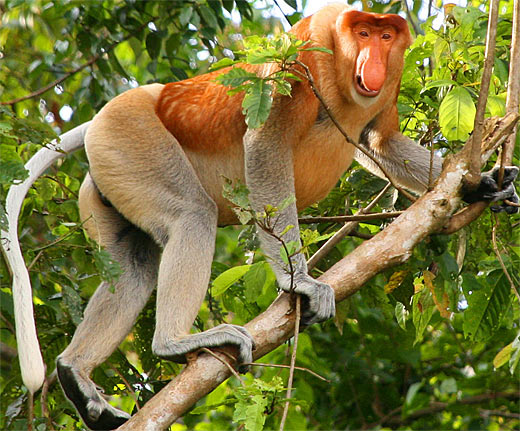Proboscis Monkey – One Big Nose
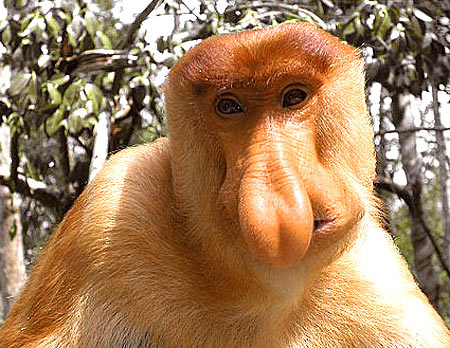
With a length of 30 inches (76 centimeters) and an average weight of 44 pounds (20 kg), and known for the size of its nose (which hangs below its mouth in the males of the species), the proboscis monkey (also known as the “Dutch Monkey”) is an Old World Monkey that can only be found on Southeast Asian island of Borneo (an island that contains the nations of Brunei, Indonesia, and Malaysia). The female’s nose is not nearly so large. Also noted for its pot belly and webbed toes, the proboscis monkey lives primarily along coasts and rivers; never living more than a kilometer away from a water source.
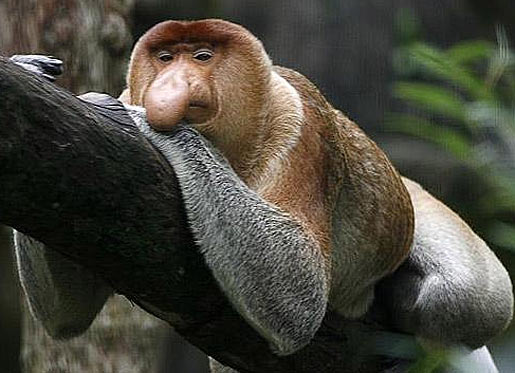
In terms of habitat, it prefers dipterocarp forests, mangrove forests, riverine forests, swamp forests, rubber forests, limestone hill forests, nipa swamps, nibong swamps, tropical forests, and cliffs. The proboscis monkey is also known for its prowess as a swimmer, as it’s capable of swimming 65 feet (20 meters) when completely submerged. However, it’s primarily arboreal and spends most of its time swinging through trees.
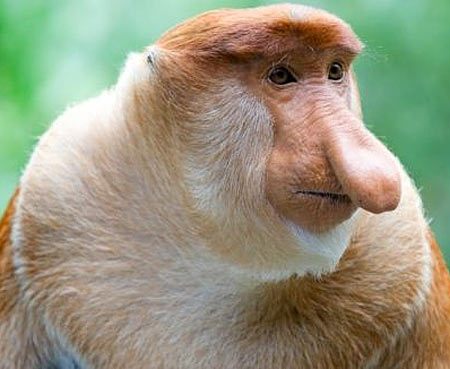
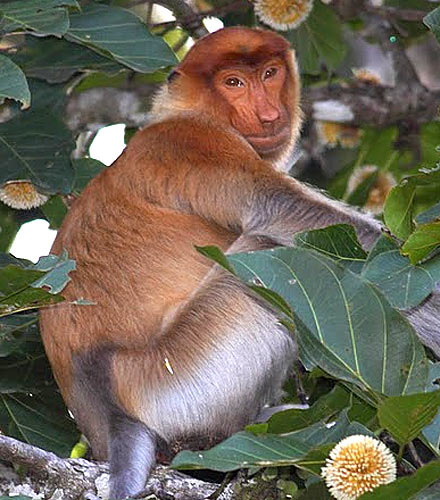
A folivore (eats foliage) and a frugivore (eats fruit), the proboscis monkey survives off at least 55 different plant strains, and prefers to eat overly mature leaves and unripe fruit. Despite its ability to evade danger via tree climbing and swimming, the proboscis still has plenty of predators, including crocodiles, clouded leopards, eagles, monitor lizards, and pythons. The proboscis monkey is a very intelligent species, and is thus capable of various forms of communication. They make honks to communicate group cohesion, honk to get the attention of infants, honk to reassure one another. You know with that nose they had to be honkers! They also emit alarm calls to signal danger, make threat calls, emit calls of agitation, roar and snarl during antagonistic encounters, and shake branches or bare-teeth to show aggression. Unfortunately, as a result of habitat loss and hunting, the proboscis monkey is currently listed as an endangered species, and is thus the subject of conservation efforts.
